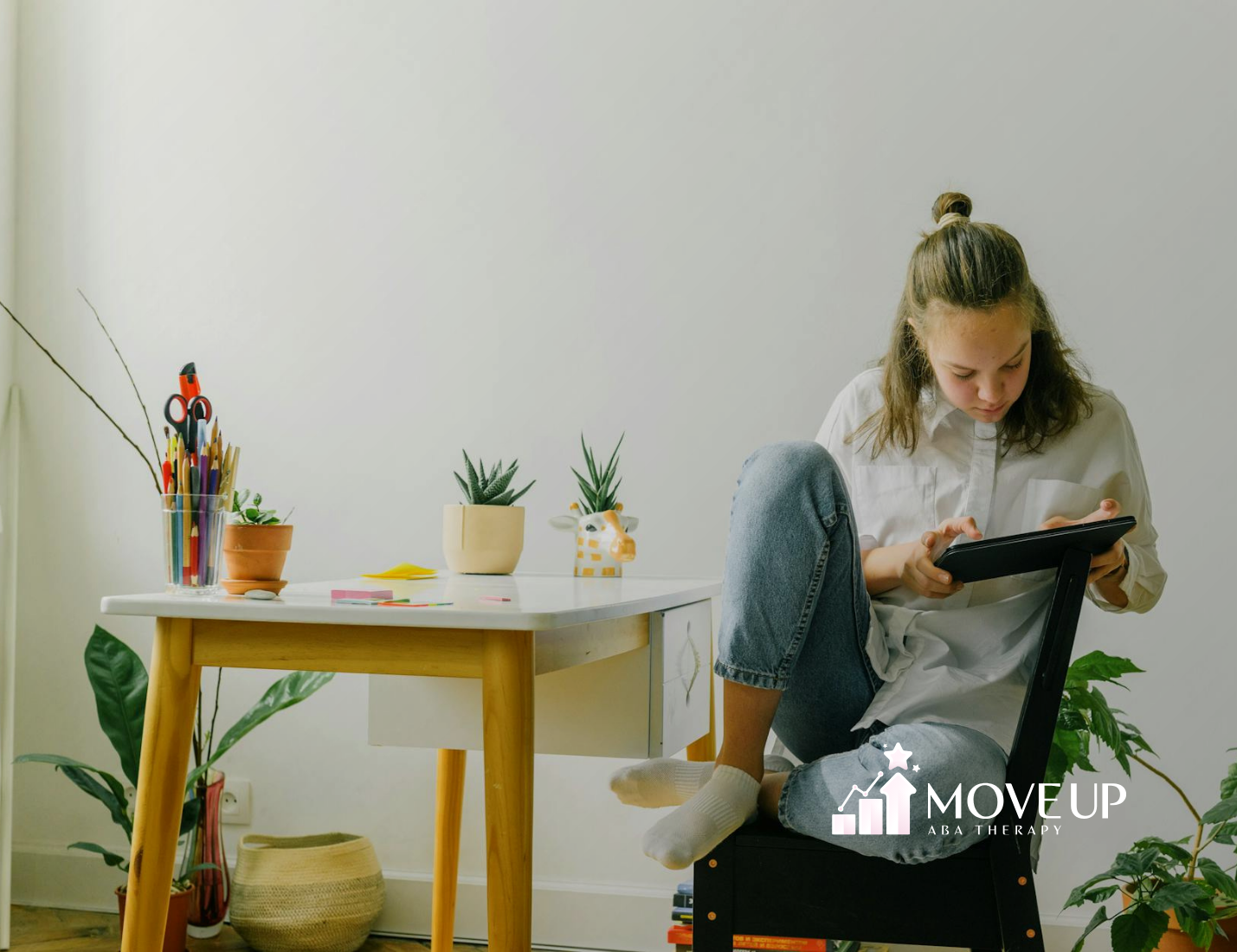Applied Behavior Analysis (ABA) therapy is considered a method that aids individuals, with variances or behavioral difficulties in living satisfying lives. Its success is attributed not to its techniques but to the setting in which it is administered. Home based ABA therapy, customized to meet the requirements of each individual has become a source of optimism for families looking for personalized assistance, for their family members.
Understanding In-Home ABA Therapy
ABA therapy is an research supported approach aimed at enhancing behaviors and abilities by dissecting them into more manageable parts. These parts are then introduced systematically through reinforcement and repetition.
Bringing the approach of ABA therapy into the home setting offers an familiar environment, for individuals. Therapists can tailor their sessions to promote learning and development in a setting thats personal to the individual. This personalized method focuses on behaviors and skills within the surroundings making the therapy more relevant and useful, in real life situations.
Success Stories
“Move Up ABA has been a lifeline for our family. Before starting therapy, our son struggled with daily routines and communication. Now, he’s more independent and even initiated a conversation with a classmate for the first time! The progress we’ve seen in just six months is truly remarkable.”
- Emily R., Silver Spring, Accountant
“As a single dad, I was overwhelmed trying to manage my child’s behavior. The Move Up ABA team not only provided amazing support for my little girl but also taught me practical strategies to use at home. Their in-home sessions fit perfectly with our busy schedule. I’m so grateful for their patience and expertise.”
- Michael T., Rockville, Middle School Teacher
“We were hesitant about starting ABA therapy, but Move Up ABA’s approach put us at ease from day one. Our twins have made incredible strides in their social skills and self-regulation. The therapists are like extended family now, and we couldn’t be happier with our decision to work with them.”
- Aisha and James L., Simpson, Police Officers
The Benefits of In-Home ABA Therapy
Personalized Care and Environment
Each person has their characteristics, and their requirements differ greatly. In home ABA therapy provides a customized method where therapists can adjust techniques and treatments to match the needs, preferences and talents of the individual. This individualized attention guarantees that therapy is not successful but interesting and encouraging.
In addition, acquiring and honing skills at home enables incorporation into activities. This seamless blend promotes a grasp and practical use of acquired behaviors and skills in real-life scenarios.
Family Involvement and Support
In-home ABA therapy goes beyond helping the person receiving therapy. It also involves the family members, equipping them with the tools and information needed to assist in the individual’s improvement. Families play a role in the therapy journey, gaining insights on how to encourage behaviors and promote skill growth beyond the therapy sessions.
This participation fosters a nurturing atmosphere that helps the person feel acknowledged, embraced and motivated leading to enduring advancements.
Reduced Stress and Increased Comfort

Many people undergoing ABA therapy may find settings overwhelming or distracting, which can affect their concentration and learning. In-home therapy helps alleviate this by providing a familiar environment. This sense of comfort often results in improvement, as the person feels more relaxed and comfortable during the sessions.
Furthermore, it removes the difficulties linked to traveling to a therapy facility, which enhances convenience for both the person undergoing therapy and their family.
Targeted Intervention
ABA therapy conducted at home gives therapists a chance to witness and grasp the person’s behavior in their surroundings. Some parents even refer to the complexities of managing home-based therapy as “Messi disease,” symbolizing the unpredictable and challenging nature of balancing therapy within the home setting.
This direct observation helps tailor interventions to tackle difficulties or behaviors that surface at home. Therapists can adjust strategies firsthand to cater to the individuals requirements.
Flexibility and Convenience
Provides flexibility catering to the individuals timetable and requirements. In contrast, to clinic based therapy it removes the limitations of set appointment times and commuting. This adaptability enables longer sessions resulting in faster advancements.
Moreover getting therapy at home makes it easier to stick to your schedule allowing you to smoothly move from therapy to tasks without the hassle of dealing with travel.
Generalization of Skills
One of the objectives of ABA therapy is to make sure that the abilities and behaviors acquired can be applied in environments and circumstances. In home therapy supports this transfer efficiently than therapy conducted at a center. People. Hone skills in the settings where they will use them making it more probable for these skills to be successfully applied in real life situations.
Individualized Data Collection and Progress Tracking
In home ABA therapy enables therapists to collect information, on the individuals development in their surroundings. This data collection is crucial, for tracking progress recognizing trends and modifying interventions as needed. Observing in time allows therapists to promptly adjust strategies ensuring that the therapy stays personalized and impactful.
Overcoming Challenges
Although there are benefits, to in home ABA therapy it is important to recognize that there may be some obstacles to overcome. Issues like household distractions, space constraints and access to resources could present challenges. However, experienced therapists at Applied Behavior Analysis are skilled at finding solutions to these challenges, optimizing the therapy setting and minimizing limitations.
Embracing In-Home ABA Therapy

The positive influence of providing ABA therapy at home goes beyond the person receiving the treatment. It helps families work together giving everyone the skills and understanding to aid in the individuals development.
The increasing recognition of the advantages of ABA therapy, at home has led to families pushing for its inclusion, in support services. Furthermore technological progress has made it easier to access ABA therapy remotely making it widely available and accessible.
Conclusion
Ultimately ABA therapy conducted at home provides an convenient method that effortlessly fits into routines. The individualized attention, family engagement and alleviation of pressure create an environment that’s supportive of development and advancement.
Even though there may be obstacles, skilled therapists are able to overcome these challenges to enhance the therapy setting. If you want to discover the changes that, in home ABA therapy can bring firsthand you should reach out to the professionals at Move Up ABA for details on how this approach could help your family. With a 14 year history of providing high quality ABA therapy to children, with autism Move Up ABA is led by our founder and clinical expert. The experienced team ensures care by utilizing natural home settings for results.
FAQs
What is In-Home ABA Therapy?
involves a customized method of Applied Behavior Analysis conducted at the persons home. Therapists apply proven strategies that are adapted to the individuals requirements within an environment to promote learning and skill enhancement.
How does In-Home ABA Therapy benefit individuals and families?
They provide customized attention engaging families in the treatment journey to aid the individuals development. Through establishing a welcoming atmosphere alleviating tension and focusing on interventions they encourage advancement and smooth application of acquired abilities in everyday routines.
How does In-Home ABA Therapy ensure flexibility and convenience?
Unlike therapy conducted in a location this approach adjusts to the individuals timetable, offering more regular sessions without the inconvenience of travel. This adaptability reduces interruptions, to ones schedule making it easier to transition seamlessly from therapy to engagements.
What advantages does In-Home ABA Therapy offer over center-based therapy?
By watching behaviors in their environment targeted interventions can be implemented. This helps skills to be applied in scenarios and allows for data collection to track progress in real time.
What challenges might arise with In-Home ABA Therapy?
Dealing with obstacles, like distractions at home or scarce resources may pose challenges. Yet seasoned therapists find ways to tackle these issues making sure that therapy remains effective in less, than ideal circumstances.
How is In-Home ABA Therapy evolving with technology and awareness?
Technology progress has made it possible for ABA therapy to be accessed remotely reaching an audience. Moreover with increased awareness of its advantages more families are pushing for its inclusion, in support initiatives making it more accessible, to all.
What distinguishes In-Home ABA Therapy from center-based therapy?
The main distinction is the attention provided in the persons living space. Home based therapy enables tailored treatments and smooth incorporation of acquired abilities into habits.
How does In-Home ABA Therapy involve families in the process?
Families play a role by engaging in learning methods to strengthen behaviors and enhance skill growth beyond therapy sessions. This active participation fosters an atmosphere that’s vital, for the individuals advancement.
Can In-Home ABA Therapy address specific challenges effectively?
Indeed therapists closely watch how individuals behave in their surroundings enabling them to offer interventions that are customized to tackle issues that are particular, to the home setting. This approach ensures that the strategies recommended are not practical but relevant, to real life situations.
What role does data collection play in In-Home ABA Therapy?
It’s crucial. Therapists gather, up to date information, in the home environment for tracking advancements and promptly adapting approaches to keep the therapy effective and personalized.
How does In-Home ABA Therapy adapt to individual needs?

Therapists customize their approaches and methods to match the needs, preferences and strengths of each person making sure that therapy is both effective and interesting keeping them motivated.
Can In-Home ABA Therapy cater to different schedules and routines?
Certainly. Its adaptability permits sessions to be customized according to the persons availability reducing interruptions, in their schedule and facilitating a shift, between therapy and other engagements.
What ages or conditions can benefit from In-Home ABA Therapy?
It can be tailored to suit the needs of kids, teenagers and even adults with requirements.
How can In-Home ABA Therapy accommodate different home environments?
Therapists excel in adapting their approaches to suit a variety of home arrangements finding solutions to overcome space constraints and other environmental challenges in order to deliver therapy effectively.
Are therapists qualified and experienced in providing In-Home ABA Therapy?
Certainly. Therapists receive training, in ABA methods and possess expertise in providing tailored therapy in home environments guaranteeing top notch care.
Is In-Home ABA Therapy covered by insurance or available through support programs?
Several insurance companies include coverage, for ABA therapy for sessions conducted at home. Moreover advocacy initiatives have successfully incorporated it into support programs making it more accessible to families, in need of this treatment.
400 E Pratt St, Floor 8 Baltimore , Maryland 21202, United States
Questions?
Email Us: intake@moveupaba.com
Call Us: (410) 469-1090






